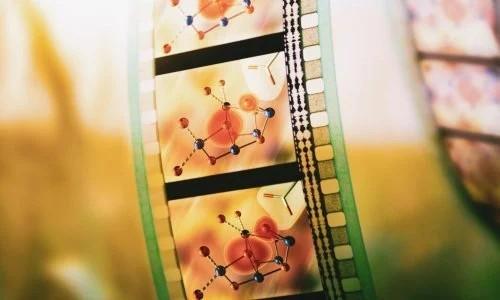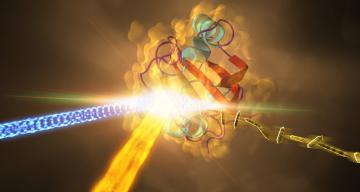Photoactive Proteins
Understanding photoactive proteins
Photoactive proteins are ubiquitous in nature and can have diverse biological functions, such as signal transduction, light-driven membrane transport, or catalyzing chemical reactions. This class of proteins contains a light-sensitive chromophore, which drives the structural changes within the protein after light is absorbed.
Some well-known photoactive proteins include photosystem I and photosystem II, involved in photosynthesis, or rhodopsin, which is found in the retina and enables our vision. Photoactive proteins also play an important role in the emerging field of optogenetics, allowing scientists to control neurons with light.
Current issues to overcome
Using the time-resolved serial crystallography method, movies of photoactive proteins in action can be recorded. Active state structures of photosensitive proteins have previously been determined at the synchrotron, using a setup in which the crystal is illuminated just before or during X-ray data collection.

However, the time resolution of the resulting molecular movie is limited when the experiment is performed and reactions that are on the order of nanoseconds or faster cannot be observed. Performing a time-resolved experiment at the synchrotron also becomes highly challenging when the reaction is non-reversible.
Finally, many photoactive proteins contain a chromophore that coordinates a metal ion, such as the proteins involved in photosynthesis. This makes the proteins highly sensitive to radiation damage, which cannot be outrun at the synchrotron light sources.
How LCLS can help
Using the ultrafast X-ray pulses from an X-ray free electron laser (XFEL) light source such as the Linac Coherent Light Source (LCLS), it has now become possible to observe protein dynamics up to femtosecond after photoactivation. Because single crystals are activated and then probed by the X-ray pulse in a serial fashion, resulting in the sample being replenished in between the pulses, these experiments are also suitable for non-reversible photocatalyzed reactions.
The ultrafast X-ray pulses also help to outrun the major effects of X-ray radiation damage, allowing the structure of sensitive metal-bound photoactive proteins to be determined at physiological temperatures.
Latest Publication
The following publications highlight how LCLS was used to make molecular movies of light-sensitive proteins in the recent years:
- Dods et al. (2021) Ultrafast structural changes within a photosynthetic reaction centre. Nature 589: 310-314.
- Hussein et al. (2021) Structural dynamics in the water and proton channels of photosystem II during the S2 to S3 transition. Nat Comm 12: 6531.
- Yun et al. (2021) Early-stage dynamics of chloride ion–pumping rhodopsin revealed by a femtosecond X-ray laser. Proc Natl Acad Sci USA 118: e2020486118.
- Nass-Kovacs et al. (2019) Three-dimensional view of ultrafast dynamics in photoexcited bacteriorhodopsin. Nat Comm 10: 3177.
- Hosseinizadeh et al. (2022) Few-fs resolution of a photoactive protein traversing a conical intersection. Nature 599: 697-701.
- Miller et al. (2020) The photoactive excited state of the B12-based photoreceptor CarH. J Phys Chem B 124: 10732-10738.
- Burgie et al. (2019) Photoreversible interconversion of a phytochrome photosensory module in the crystalline state. Proc Natl Acad Sci USA 117: 300-307.
- Sorigue et al. (2021) Mechanism and dynamics of fatty acid photodecarboxylase. Science 372: 6539.
- Lee et al. (2021) Ultrafast coherent motion and helix rearrangement of homodimeric hemoglobin visualized with femtosecond X-ray solution scattering. Nat Comm 12: 3677.
- Shelby et al. (2021) Interplays of electron and nuclear motions along CO dissociation trajectory in myoglobin revealed by ultrafast X-rays and quantum dynamics calculations. Proc Natl Acad Sci USA 118: 8966118.
- Reinhard et al. (2021) Short-lived metal-centered excited state initiates iron-methionine photodissociation in ferrous cytochrome c. Nat Comm 12: 1086.

